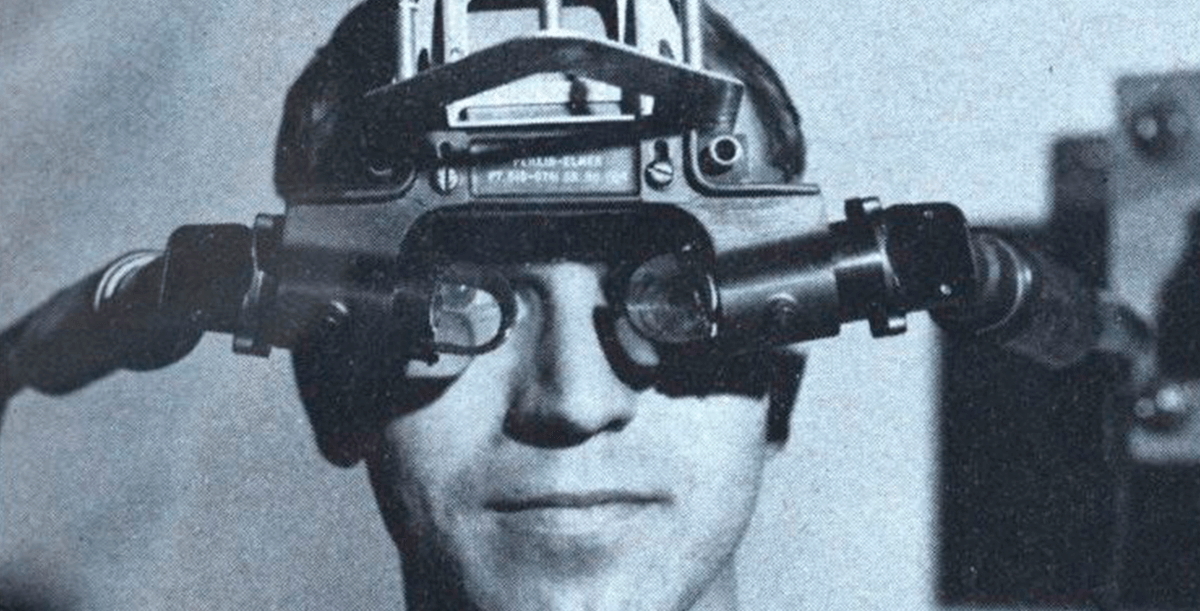
Note that after each article in this series, in addition to the traditional advertising disclaimer, we will offer a small survey.
From literature to action
In 1935, the story of the American science fiction writer and futurist Stanley Weinbaum "Pygmalion's Glasses" was published. In the work, the protagonist meets the professor who invented glasses that make it possible to create an optical, auditory, gustatory, kinesthetic and olfactory illusion of reality. Thus, perhaps the first conceptual representation of virtual reality appeared.
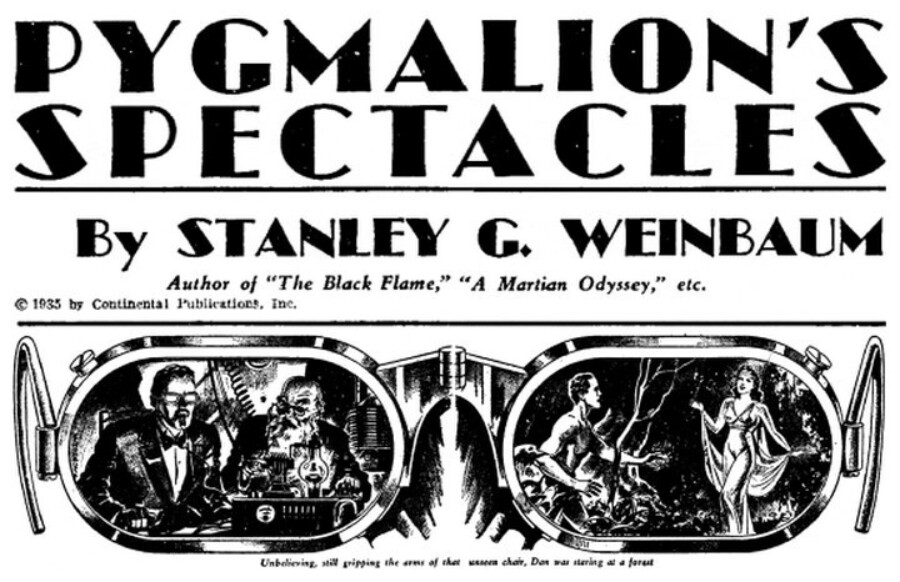
It is possible that the work was inspired by the creator of one of the early ancestors of modern VR glasses, American writer and inventor Hugo Gernsbek. I think it will not be a mistake that the childhood and adolescence of most of the pioneers of VR fell on the time of the popularity of Weinbaum's science fiction stories, and, obviously, they also borrowed ideas from there. I draw this conclusion from the fact that most of the early prototypes of what we call VR today are the implementation of the ideas described in the Pygmalion Glasses.
Early practical experiences - Sensorama
The first known reality simulation system was created by cinematographer Morton Haylith in 1956, and a patent was obtained for it in 1962. The virtual reality machine from the 50s was a fairly spacious booth, into which were integrated cinema projectors that reproduce movies on a stereoscopic screen, stereo sound, a vibration chair to simulate vibration (for example, a sinking ship or a collapse in the mountains), an installation for simulating various smells and an atmospheric emulator. phenomena such as wind and rain.
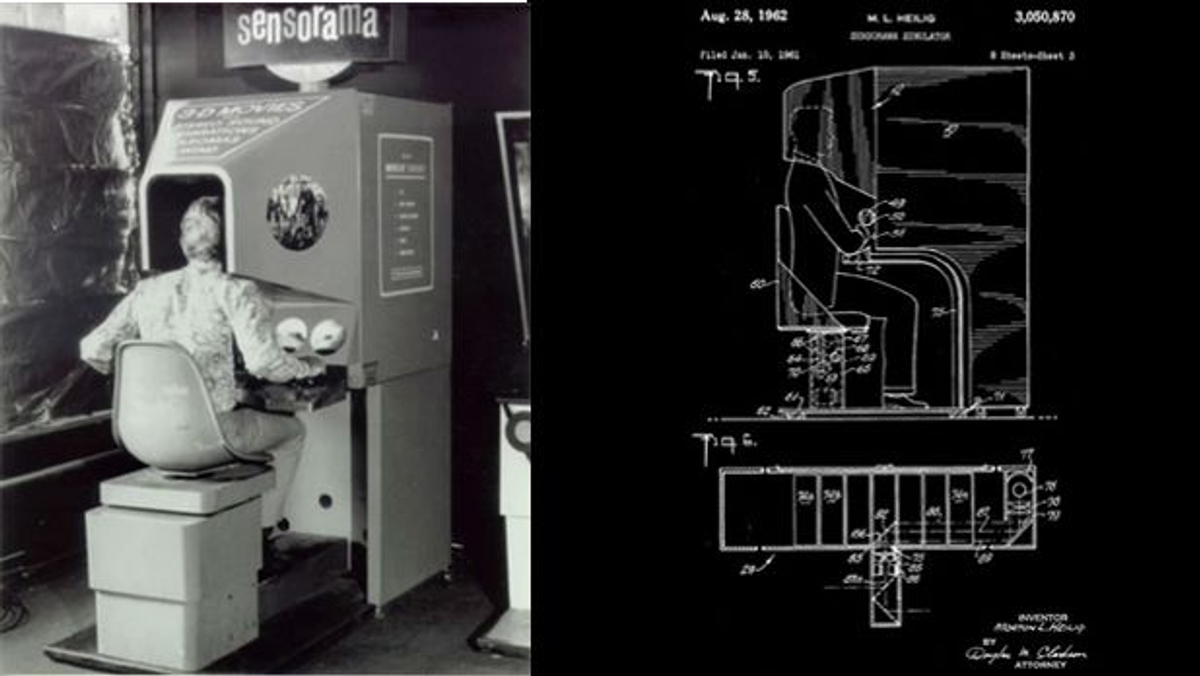
According to the creator of the device, Haiting, Sensorama was supposed to be the future of the film industry. But, as we know, she didn't. The device remained a controversial attraction, for which only six short films were produced. The booth was cumbersome and expensive, which made Sensorama unable to invest seriously and scale.
First Telesphere Mask and Headsight helmets
Another early reality simulation system was the Telesphere Mask, which has already taken the form of a helmet, we can say that this particular system was the first prototype of VR glasses. The helmet was equipped with stereo sound and made it possible to broadcast a stereoscopic image through two small cathode ray tubes. The VR headset was not equipped with a user motion tracking system. The device was experimental and used to watch video content and television programs.
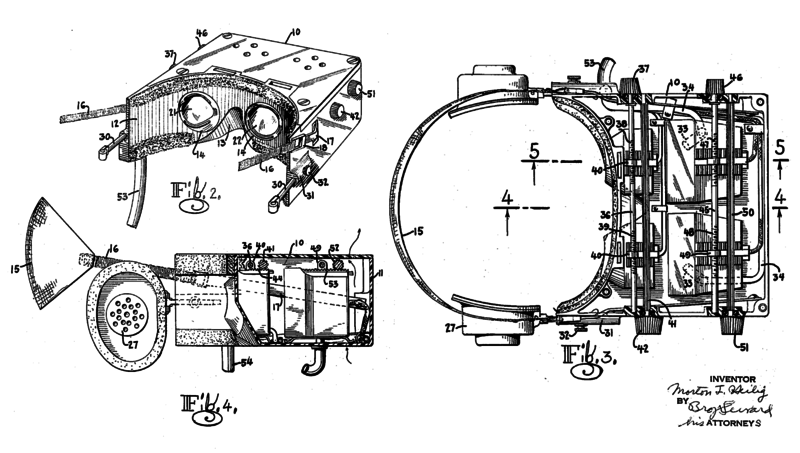
A year later, a similar helmet appears in the USA, but with head tracking. It is being developed by Philco Corporation engineers Como and Brian. The helmet is not a VR device in the full sense of the word. Headsight is a military development that simplifies remote monitoring of objects. Head movements were transmitted to the camera drives and made it possible to observe in the helmet what the camera was aimed at.
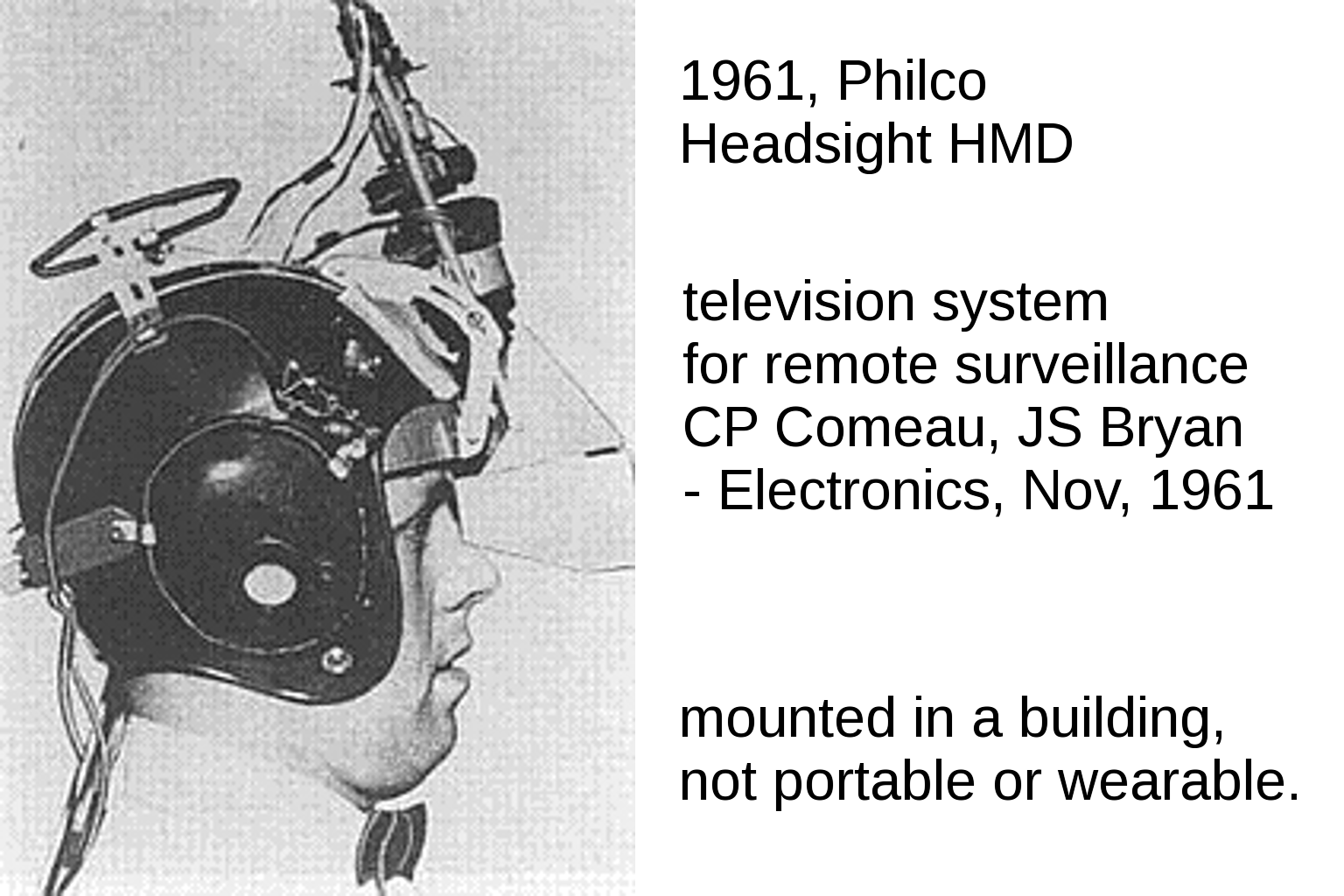
Hugo Hernsbek's TV glasses
In 1963, serial TV glasses appeared, developed by the writer and inventor Hugo Hernsbeck. They still do not track head movements, nor are they designed to work with computers. The glasses allow you to receive television broadcasts and reproduce television content (including stereo images) on two small picture tubes. The antennas sticking out of the device for receiving, in the 60s, caused persistent sensations with space and even alien themes among buyers. Unlike previous devices, TV glasses were mass-produced.
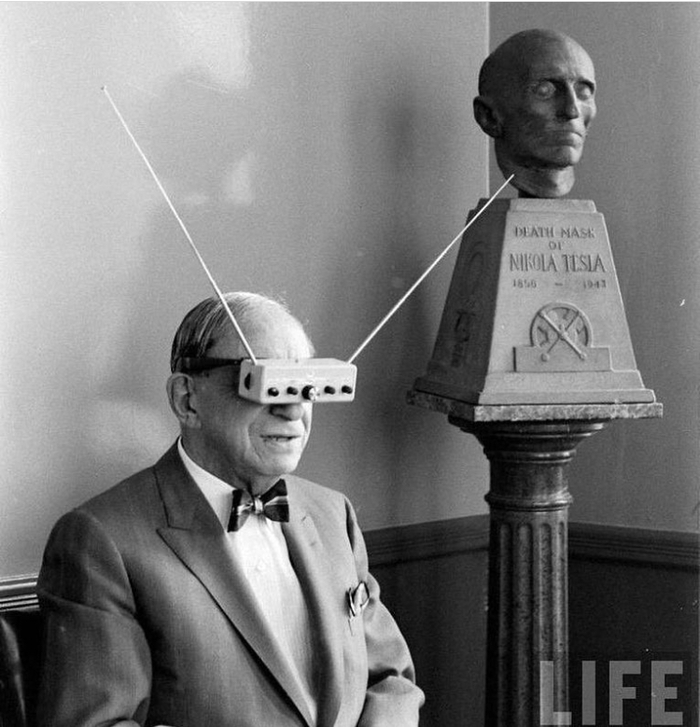
Contribution of Sutherland and the Sword of Damocles
The pioneer of VR technology related to computers is deservedly considered the American scientist Ivan Sutherland, better known as one of the fathers of the Internet. In 1965, Sutherland described the concept in which a computer simulation of the world affects the user through a special helmet, which creates such a realistic illusion that a person is unable to distinguish the simulation from reality, while the user has the ability to interact with objects in virtual reality.
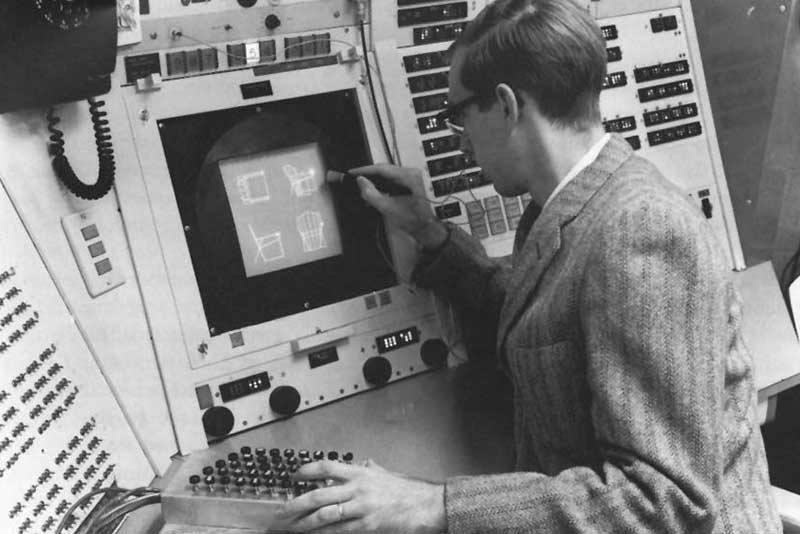
The possibilities described in the article were subsequently perceived by researchers and developers as a goal, the concept began to be perceived as a list of future achievements and a kind of futuristic plan. Sutherland saw the pinnacle of technology development in allowing the user to compare the experience of using VR with Alice's Carroll journey to Wonderland.
In 1968, Sutherland worked with his student and colleague Bob Sproull to develop the first virtual reality computer helmet. It was named "Sword of Damocles", due to the characteristic features of the fixed mount. The device, by current standards, was quite simple and displayed only primitive 3D models on the screen in the form of uncomplicated volumetric geometric shapes.
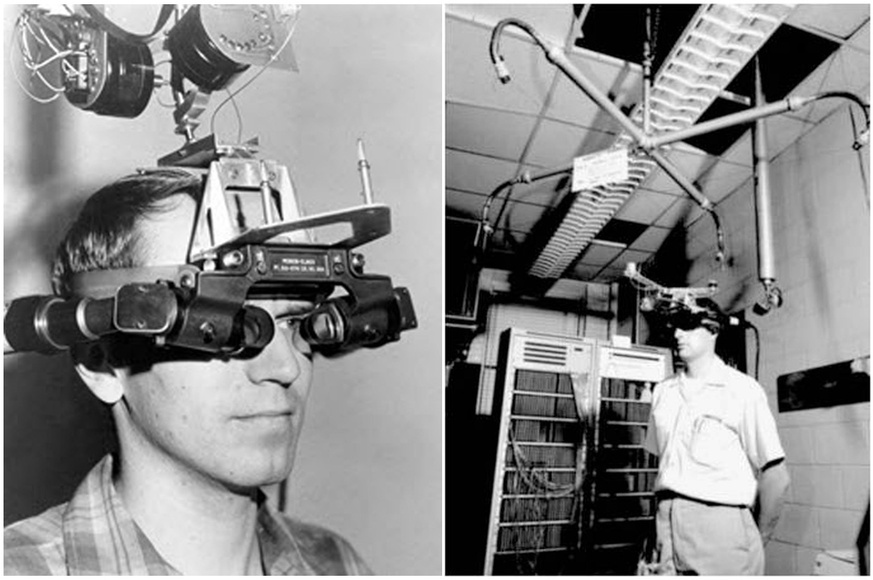
The Sword of Damocles was equipped with head tracking, depending on which the perspective on the screen changed. The device was exclusively laboratory-based, primarily due to its high mass, which required ceiling mounting.
To be continued
Sutherland completed the first stage of VR development, before the appearance of full-fledged production systems, there was still a decade and a half of military development and laboratory research. Meanwhile, it was he and his predecessors who determined the directions of VR development.
Jeans:
In our catalog you can buy a wide variety of electronics: TVs, speakers, headphones, soundbars and much more. Perhaps in the near future, we will have VR glasses. While we are studying the demand for these devices.